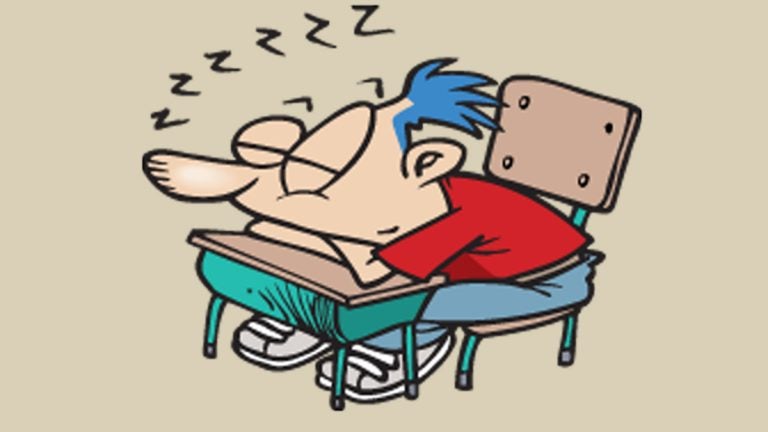Commentary: Teens learn better when they’re awake

Last week the New Jersey Senate Education Committee approved a bill proposed by Sen. Dick Codey (D-Essex) that would authorize “a study on the issues, benefits, and options for instituting a later start time to the school day in middle school and high school.” Makes sense, right? After all, we know that the hormonal changes of puberty affect teenagers’ circadian rhythms which, in turn, dictate sleep schedules and alertness. If you’ve had teenagers (I’ve had four) you know that they’re late to bed and late to rise, a pattern that hardly squares with school start times of 7:30 or so. Sen. Codey’s bill logically proposes that middle and high schools students start school when they are awake enough to fully benefit from academic instruction. This shift is supported by the American Academy of Pediatrics.
You’d think that this would be an easy call for the State Legislature, but it’s complicated. With all the agonizing we do over the state of American education — our kids are underperforming! our kids are over-tested! it’s the race to nowhere! it’s their only chance! — we rarely focus on the fact that school schedules are shaped by an assortment of priorities that at times coexist harmoniously with the academic mission of schools and at times conflict with that mission. One of those conflicts is our tradition of designing school schedules to accommodate the needs of extracurricular activities. Perhaps the most valuable aspect of Sen. Codey’s bill is that it forces us to examine that compromise.
Take, for instance, Cinnaminson Public Schools in Burlington County. There, elementary school students begin their day at 9:06 AM and are dismissed at 3:34 PM. Nothing unusual there: districts tend to start school days for younger students later than for older students.
At Cinnaminson High School, students report to homeroom at 7:35 AM and end their official school day at 2:11 PM. Some educators would argue that 2 in the afternoon is prime learning time for teenagers, but extracurricular activities take up the next few hours. For example, on November 5th, according to the Cinnaminson athletics schedule, varsity soccer players reported for practice at 2:00. There was also a freshman football game at 3:45, followed by a varsity volleyball game at 5. The high school website lists about forty afterschool clubs and most probably meet in the afternoons after school is out.
Of course, extra-curricular activities like art, music, athletics, and clubs offer all kinds of benefits to students. They can instill discipline, good character, and sportsmanship, and offer opportunities for creativity and collaboration. These are important skills for college and the workplace. Some kids show up for school just to play on the football team or sing in the choir. Often sports teams help define a community’s spirit and camaraderie, that whole Friday Night Lights thing.
But maybe we’ve lost perspective when the time and space needs of non-academic subjects justify school start times at odds with teenagers’ hormonally-dictated alertness patterns.
Sen. Cody’s bill would flip the schedule of the elementary and secondary students. In Cinnaminson, younger students would start at 7:35 and end in the early afternoon, and the older ones would start school at 9 and end a little before 4. This would probably help with academic achievement but wreak havoc with afterschool obligations.
N.J. Spotlight looked at one district, Pemberton (also Burlington County), that shifted its schedules to accommodate sleep needs of older students. While academic performance improved, sports teams were inconvenienced, kids with after-school jobs couldn’t get there on time, and parents complained about the lack of childcare after school for elementary school students. As a result of intense community opposition, Pemberton flipped back. Once again, high school students start their school days at 7:15.
We wring our hands over the amount of time devoted to test-taking in this era of Common Core-aligned PARCC exams, but where’s the hue and cry over the sacrifice of hours of learning time to non-academic activities? We love to point to Finland as a paragon of public education (forgetting that its small, homogeneous student body bears no resemblance to American demographics). In Finland there are no school sports teams or extracurricular activities. School is school. I’m not suggesting that we go there. This is America, not Finland. But maybe it’s time to think harder about school schedules.
________________________________________________
Laura Waters is vice president of the Lawrence Township School Board in Mercer County. She also writes about New Jersey’s public education on her blog NJ Left Behind. Follow her on Twitter @NJLeftbehind.
WHYY is your source for fact-based, in-depth journalism and information. As a nonprofit organization, we rely on financial support from readers like you. Please give today.





